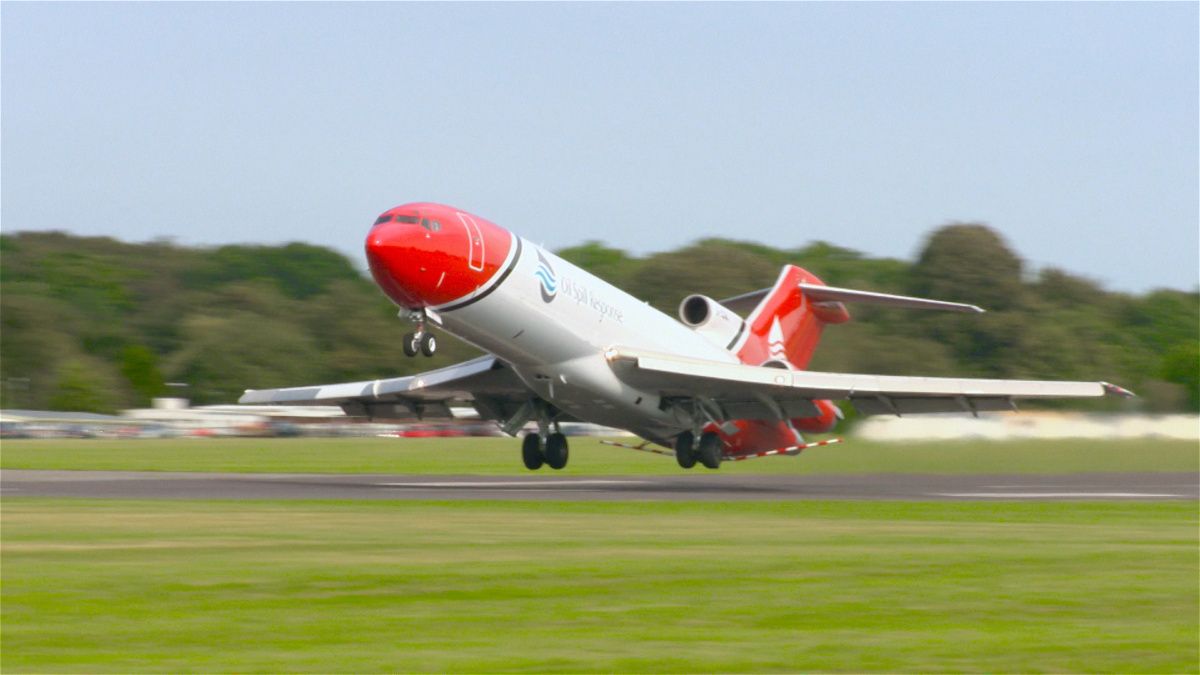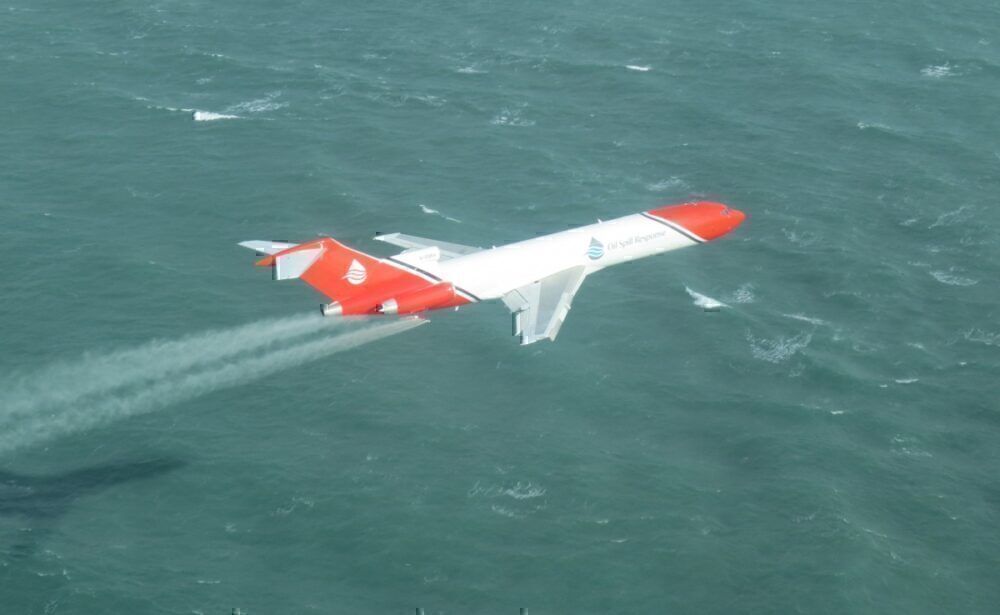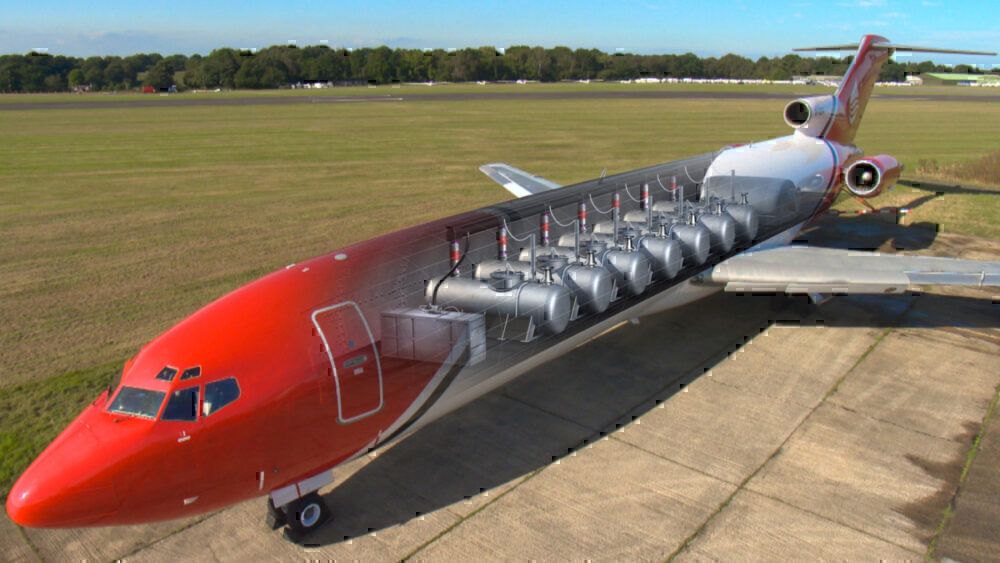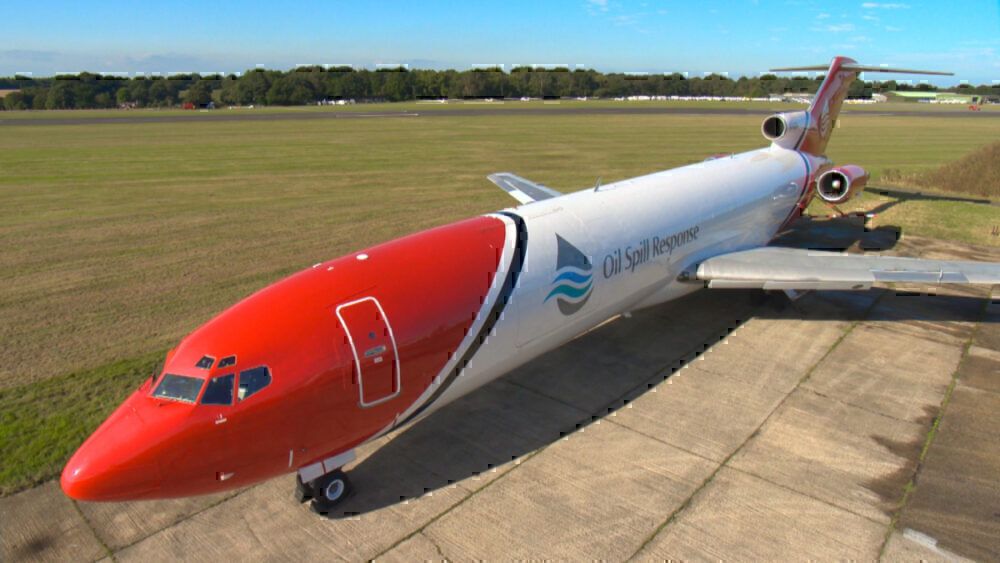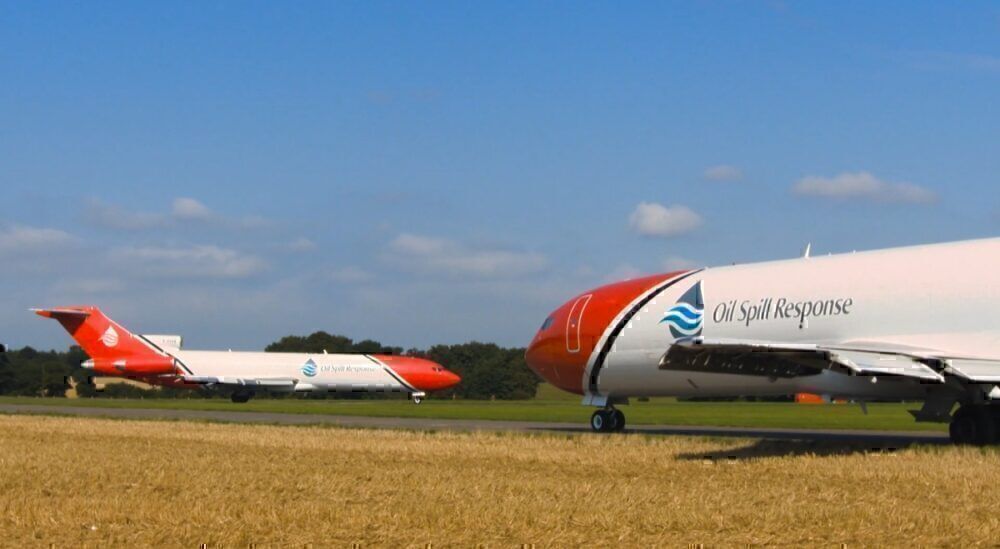The Boeing 727 has had an incredible history. From its time as a short- and medium-haul workhorse across the United States to operating the last Pan Am flight, the plane is still in minimal service. One such special operation two Boeing 727s are a part of is the Oil Spill Response Limited, or OSRL, initiative to use the Boeing 727s to respond to oil spills.
Turning the 727 into an oil spill response plane
OSRL has two Boeing 727-200Fs, which it acquired from FedEx. The two 727s were fitted with internal tanks, pumps, and a spray boom. The plane can deliver dispersant liquid and can support oil spill responses nearly anywhere in the world. T2 Aviation Limited sourced, designed, modified, certified, and operates the Boeing 727s for OSRL.
Stay informed: Sign up for our daily aviation news digest.
When there is an oil spill, the plane flies at a low altitude above the area. The aircraft sprays dispersants, which breaks down oil slicks into smaller droplets. The smaller droplets are more easily biodegraded, minimizing some of the harmful environmental effects of an oil spill. Spray operations are conducted at an altitude of about 150 feet at speeds around 150 knots– much slower than standard commercial services, which are around 500 knots.
Inside the aircraft, there are seven tanks. Combined, these hold 15,000 liters (~3962 gallons) of dispersant. In addition, there are also pump systems that allow the aircraft to spray the dispersants. All of these features are controlled from the cockpit, minimizing the need for additional crewmembers.
Why the Boeing 727?
OSRL stated that the 727 was selected because it offered great stability, adaptability, and an "almost unrivaled power to weight ratio." OSRL wanted to acquire an aircraft that was faster and could fly further than the existing L-382 Hercules.
The 727s were also much cheaper to acquire thanks to their old age. Given the fact that these planes won't be doing a lot of flying– only for training, demonstrative, and operational purposes– then it makes sense to acquire an older aircraft without worrying about an outdated passenger experience or high maintenance costs. Plus, 727s are not very high in demand after reaching the end of their true commercial lifespan.
In addition, when converting the aircraft, the metal frame makes it easier to adapt and repurpose the plane. OSRL states that more modern aircraft, including those made of composite materials, would be more challenging and expensive to modify for these missions.
The Boeing 727 also does not require very long runways. This can make the aircraft far more flexible than other jets when responding to an oil spill– especially if one occurs in more remote areas with less developed infrastructure where the nearest airport may be far away.
What is the Oil Spill Response Limited?
OSRL states that it is the "largest international industry-funded cooperative." Per its name, the initiative responds to oil spills wherever they occur. Its team provides preparedness, response, and intervention services.
The initiative retains two Boeing 727s for use. G-OSRA and G-OSRB are stationed at Robin Hood Airport in Doncaster, UK. When necessary, the aircraft are dispatched from the facility as necessary to respond.
What do you think about these Boeing 727? Let us know in the comments!

